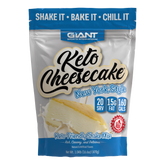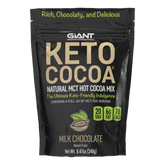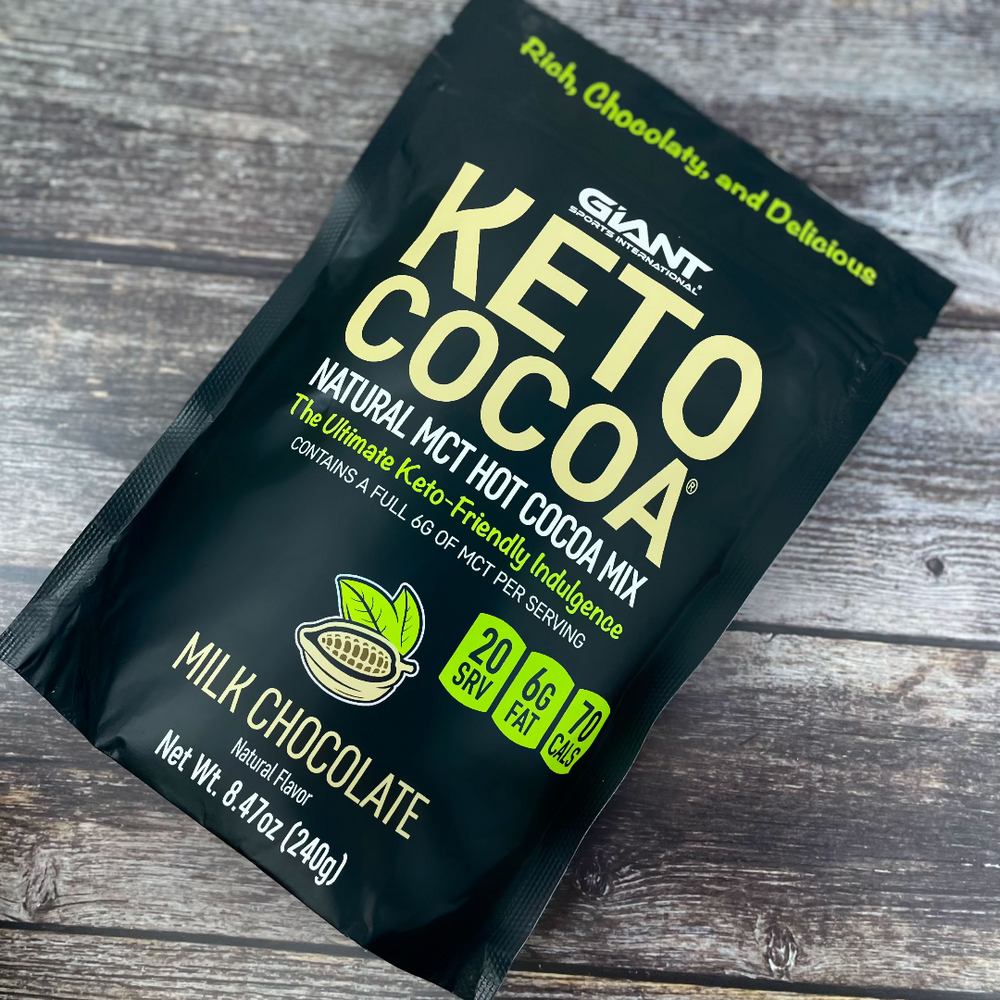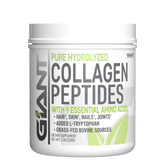
What You'll Learn...
- How Does the Body Enter Ketosis?
- Some Side Effects of Ketosis
- What Is the Keto Rash?
- What Causes the Keto Rash?
- How to Treat the Keto Rash
- How to Determine If the Keto Diet Is Causing Your Rash
- How to Address a Nutrient Deficiency
- How to Determine If Your Rash Is Caused by a Food Allergen
- How to Reduce Chances of Developing the Keto Rash
- Final Thoughts
Some people who start the keto diet develop an itchy rash across the chest, back, armpits, and neck, which is sometimes called the keto rash. It is usually symmetrical and very itchy. The keto rash is a common side effect that people may experience when they begin the keto diet.
How Does the Body Enter Ketosis?
Under normal circumstances, when you eat foods that are high in carbs, your body breaks the carbs down into sugar molecules, including glucose. The glucose travels through your bloodstream and is used by all of your cells for energy so that they can perform their functions. If you have extra glucose left over, it can be stored in your liver and muscles as glycogen. When you begin the keto diet and restrict your intake of carbs, your body will have to use the stored glycogen for energy. Once your body uses all of the glycogen up, it will begin to use ketones from stored fats as
fuel for energy. This process can take as few as two days or as much as a week, and it will depend on how high-carb your diet was before you started. It can take time to use up the glycogen stored in your liver and your muscles.
Some Side Effects of Ketosis
When your body transitions to ketosis, it goes through a number of biological adaptations, and you can experience side effects. The amount of insulin your body produces is reduced because your body doesn’t need it to direct the glucose to the cells. In addition, your body increases its break down of fat because the ketones come from fat. Your liver will start producing a lot of ketones to provide the energy that your cells need to function.
As your body is adapting to this new metabolic state, you may experience any of the following:
- Bad breath: it comes from the ketone acetone, which exits through breath and urine
-
Weight loss: can be fast in the beginning
- A decrease in appetite: reported by many people
- Keto flu: during the transition
- Weakness and fatigue: may last a week to a month as your body transitions to full-time ketosis
- The initial decrease in exercise performance: due to the body using glycogen stored in muscles
- Digestion issues: constipation or diarrhea during the transition
- Insomnia: can last a few weeks during the transition
- Keto rash: rash from inflammation of the skin
All of these symptoms are a result of your body adapting to the transition from using glucose for energy to using ketones. Your body has been using carbs to make glucose your entire life. It takes some time to transition away from this process. However, there are precautions you can take and you can always work with a medical professional to make sure that you are transitioning in the way that is best for your body.
What Is the Keto Rash?
The keto rash goes by the formal name of
prurigo pigmentosa, and it is a condition that causes inflammation of the skin around the chest, back, armpits, and neck. It appears as an itchy rash, and it is usually symmetrical.
It can happen to anyone, and it includes the following symptoms:
- Itchy red rash on back, chest, armpits, and neck
- Papules, or red spots, appear in web formation
- Spots disappear and leave a brown pattern on the skin
Research to understand the keto rash better is new, and the exact cause of it is not known. The rash is uncomfortable, but it is not dangerous or life-threatening. However, if you have the keto rash, it can become worse when you exercise or generate heat, friction, or moisture.
The keto rash has
four stages, including the following:
- Stage 1: urticarial papules plaques appear as light pink skin lesions that look like scratches.
- Stage 2: papules form, and they can include liquid or pus-filled cysts.
- Stage 3: papules become scaly and crusty; lesions become darker
- Stage 4: rash fades into a pattern of dark spots called reticulated hyperpigmentation.
The last two stages last the longest, and the amount of time the keto rash takes to run its course varies from person to person.
What Causes the Keto Rash?
Researchers are still learning about the link between ketosis and prurigo pigmentosa. They have determined that there is a link, but they have not yet found the exact
reason for it. With that being said, there are a few things that may lead to the keto rash. Take a look at the following:
-
Acetone: Acetone is a ketone that your body produces during ketosis, and it can cause inflammation around your blood vessels that triggers the rash.
-
Fasting: Often people engage in intermittent fasting to trigger ketosis, and this sudden switch can lead to the keto rash.
- Reduced carb intake: A sudden reduction in carbohydrate intake that leads to weight loss may cause the keto rash.
- Allergic reaction: Some people have an allergic reaction to new foods they consume on the keto diet.
- Nutrient deficiency: Some people suffer a nutrient deficiency from changing their diet without replacing lost nutrients in new foods.
In addition, some people who get the keto rash report that it recurs or doesn’t completely go away. It appears that the rash can be exacerbated by sweat, friction, moisture, and emotional stress.
How to Treat the Keto Rash
If you find that you are afflicted with the keto rash, there are steps you can take to relieve the symptoms and recover. You may be able to alter your diet to initiate a more gradual reduction in carbohydrate intake, or you may need to make changes to the foods you are eating. Here are a few ways to treat the keto rash at home:
-
Wait it Out: For many people, the keto rash will go away once your body adapts to ketosis. You have to remember that when you reduce your carb intake and your body uses up its glycogen stores, the liver will immediately begin producing ketones and sending them into the bloodstream. Initially, your body won’t use the ketones efficiently because it is still adapting. As your body adapts to the new process, the keto rash may go away.
- Increase Your Carbs: You can use this method to determine if you have the keto rash. If the rash is caused by the production of ketones, then increasing your carbs should cause the rash to calm down. You can try this method to determine whether or not your body is sensitive to ketones.
- Check Your Nutrients: If the keto rash is caused by a nutrient deficiency, you can make sure that you are getting the appropriate amount of nutrients for your body’s needs. Make sure that you are eating enough vegetables and foods that are low in carbs, but nutrient-dense, such as cabbage.
- Eliminate Common Food Allergens: Common foods that people consume when they are using the keto diet include dairy, fish, nuts, seeds, and eggs, which also happen to cause allergic reactions in some people. Try an elimination diet to determine whether one of the foods you have introduced is causing the keto rash.
- Skin Care: Clean your skin with warm water and gentle soaps and cleansers that are designed for rashes.
-
Anti-Inflammatory Supplements: use supplements that help improve symptoms of dermatitis.
-
Medication: You can talk to your doctor about taking antibiotics.
How to Determine If the Keto Diet Is Causing Your Rash
There has been research that suggests that ketosis may trigger the
keto rash. There were 16 patients who participated in the study, and eight of them had fasted for an extended period, while six had entered ketosis.
It is actually quite simple to test whether or not the keto diet is the cause of your rash. When you begin the keto diet, it is possible to reduce your carb intake too quickly. In addition, some people use fasting as a way to trigger ketosis more quickly. Fasting and a drastic reduction of carbohydrate intake can speed up ketosis.
You can begin by increasing the number of carbs you consume enough to get kicked out of ketosis. If the rash begins to subside, reduce your carb intake again, and see if the rash comes back. If it does, this is an indication that your body may be reacting to ketosis.
You may need to experiment with your diet to find the right balance for your body. You can use variations of the keto diet to receive the health benefits and experience weight loss without suffering from the keto rash.
Start off by keeping your carb intake around 100 grams of carbs per day, and see how it goes. If all is well, reduce to 80 grams. You can keep going until you find your boiling point. Once you do, you will know where you need to be to enjoy the benefits of the keto diet without breaking out into the keto rash.
How to Address a Nutrient Deficiency
The way to make sure that you aren’t suffering from a nutrient deficiency is to increase your consumption of nutrient-dense foods or take a supplement. There are many vitamins and minerals that you may have inadvertently reduced when you cut certain high-carb foods out of your diet.
Certain minerals are important for cells to function and give you energy, including the following:
- Sodium
- Potassium
- Magnesium
- Calcium
In addition, there are vitamins that play a role in minimizing inflammation, so you should be sure that you are getting enough of the following vitamins:
- Vitamin A
- Vitamin D
- Omega-3s
Finally, since ketosis causes your body to break down fats to produce ketones for energy, you may want to supplement with the following bile salts because they will help your body in this process:
- Cholic acids
- Deoxycholic acids
- Chenodeoxycholic acids
- Lithocholic acids
How to Determine If Your Rash Is Caused by a Food Allergen
There are many people who completely change their diets when they start to go keto. If you were accustomed to a diet that was high in processed foods and carbohydrates, and you suddenly switched to healthy fats from animals and plant-based foods, you may be suffering an allergic reaction. Take a look at the following foods that may cause an allergic reaction:
- Shellfish (clams, crab, oysters)
- Peanuts
- Tree nuts
- Dairy (cheese, yogurt, cottage cheese)
- Eggs
- Fish
You can find out whether a new food is a culprit by trying an elimination diet. When you use an elimination diet, you can follow these steps:
- Eliminate all new foods (potential allergens) for 30 days.
- Watch for your rash to improve or go away altogether.
- Reintroduce the foods, one at a time.
- When you introduce a food, wait two weeks before introducing another.
- Add another food every two weeks as long as your rash stays away.
- If the rash reappears during one of the food trials, this is the cause of your rash.
If you discover that a particular food is the cause of your rash, you can eliminate that food from your diet and continue on the ketogenic diet without concern.
If you know that you do not have a dairy allergy you can try our
Keto Cheesecake that is low-carb, no added sugar, and made with real cream cheese.
How to Reduce Chances of Developing the Keto Rash
If you are worried about getting the keto rash, you can take steps to reduce the likelihood of it appearing. Now that you are aware of the possible causes of the rash, you can take preventative measures to start your keto diet without fear of the rash.
-
Reduce Carbs Slowly: Rather than suddenly dropping your carb intake to 20 grams a day, you can begin with a gradual reduction over 30 days. You should first determine where you are before you start the diet. Everyone is different, and you should track your carbs for a few days to start out. Start by reducing your carb intake to 100 grams per day. After a week, reduce it to 80 grams. Keep going until you get to 30 grams a day. If you give your body time to adjust each time you reduce your carb count, it might not be shocked into triggering the keto rash.
- Don’t Fast: Often people who begin the keto diet want to get into ketosis quickly, and they will add intermittent fasting as a method to do so. If you are worried about developing the keto rash, wait until your body has fully adapted to ketosis to incorporate intermittent fasting into your diet plan.
- Supplement: To make sure that you don’t find yourself with a nutrient deficiency, begin supplementing your diet with essential vitamins and minerals right away. You can take a keto supplement or make sure that you add a nutrient-dense food into your diet. Just make sure that you are getting the nutrients that your body needs.
- Add New Foods One at a Time: You should avoid drastically changing your entire diet all at once. If you plan to add foods that you are not accustomed to eating, do it one at a time. This way you will find any potential food allergens right away, and you can avoid it.
- Watch for the Keto Rash: Keep an eye on your skin, and if you see the keto rash appear, immediately raise your carbohydrate intake. Often people fail to notice the rash until it is in the third stage, and it is very uncomfortable by this point. As soon as you see any hint of lesions appear, eat more carbs so that the rash doesn’t have a chance to develop.
Final Thoughts
The keto rash can be incredibly uncomfortable, but you can take steps to relieve your body of the symptoms and prevent it from occurring. Often people get excited about the keto diet, and they jump right in and drastically reduce their carbs. While this may help to achieve ketosis more quickly, it can also shock your body and lead to side effects including the keto rash.
Your body has spent your entire life taking in carbs and converting them to glucose to deliver energy to your cells. Luckily, the body has back up plans for times of low glucose, including using the glycogen stored in your muscle tissue and liver and making ketones. Once the glycogen is depleted, the liver begins metabolizing fat to create ketones for fuel.
It can take time for your body to adapt to this new process, and it uses the ketones less efficiently at first. This can lead to the keto rash, which is itchy and uncomfortable. Be sure to transition your body at the pace that works best, and keep an eye out for signs of the keto rash. The keto diet is a healthy lifestyle choice, but you need to make sure that you give your body time to adjust.











